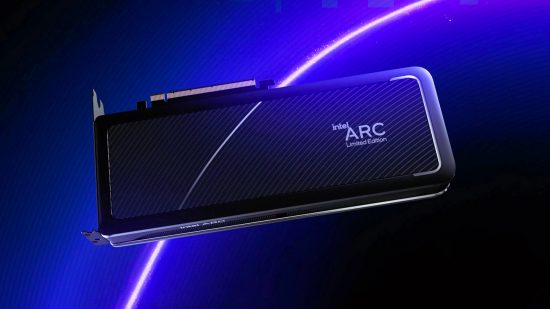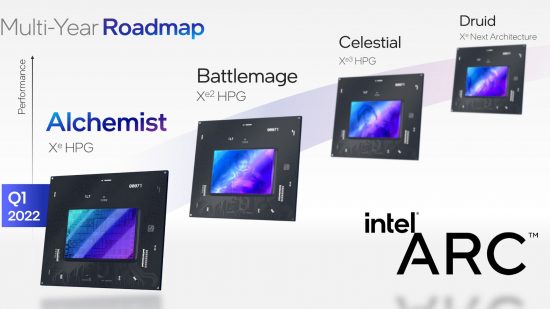Since 2019, Intel has talked about its new Xe era of graphics. After hiring a large chunk of the AMD Radeon team, including its then senior vice president and chief architect, Raja Koduri, several ex-technology journalists and a boatload more, we’ve been drip-fed a steady stream of news about these magical graphics chips.
Last year Intel introduced the DG1 – the very first Xe GPU fitted onto an actual PCI-E card. Except you couldn’t buy it. It was only issued to very select system builders in very limited volumes, and its performance proved little better than what you get inside its CPUs. It wasn’t even a sliver of the gaming credibility we were expecting.
Later in the year, it announced that future Xe graphics architectures were now named Arc and would be available by the end of March 2022. Then, 48 hours before the month ended, Intel launched its first Arc graphics chips – the Arc 3 350M, 370M and Arc 5 550M. Except it didn’t really.
In the following weeks, only a few Korean users got an Arc GPU to use in a Samsung Galaxy Book 2. In a tweet following questions on the lack of silicon, Intel revealed that pre-ordered laptops with Arc GPUs were now pushed back into the summer. The number of design wins was (at the time) limited to only Samsung and Acer, which was an indication of Intel’s capacity to supply laptop builders.
Well, it’s now the summer and there are a smattering of new laptops with Arc GPUs in Asian markets, which is a far cry from the previous assertions of wide availability. We’ve had three years of marketing hot air already from Intel. They should have sold balloons.
We’ve yet to see even a real road map either. Intel has only showed that Arc Alchemist – the general architecture – is all we’ll see this year, which scales up to the ‘performance’ category.
Then, at some point in 2023-24, we’ll get next-gen Arc Battlemage GPUs that reach up to the ‘enthusiast’ segment, and it won’t be until around 2025 that we’ll see an ultra-enthusiast (flagship-grade) GPU made on the next-generation Arc Celestial architecture. This puts it out of sync with AMD/Nvidia launch cycles, which are coming this year and in late 2024.
It’s not that we didn’t expect laptops to be first. Gaming laptop buyers are typically less fussy, so it’s the best starting place. Also, because of the unique power and thermal design characteristics in every gaming laptop, the exact performance comparison between any competing GPUs is far harder to determine than for desktop GPUs.
Intel also knows it doesn’t have the credibility to win over gamers that easily. It must prove itself first, and it will do that through laptops and less known brands, rather than big-name partners such as Alienware, Lenovo Legion, Asus ROG and so on with pre-builds, just as it did with the DG1. It’s a slow and risk adverse strategy, and it keeps our readers and system builders at arm’s length for another year, or more, yet.

